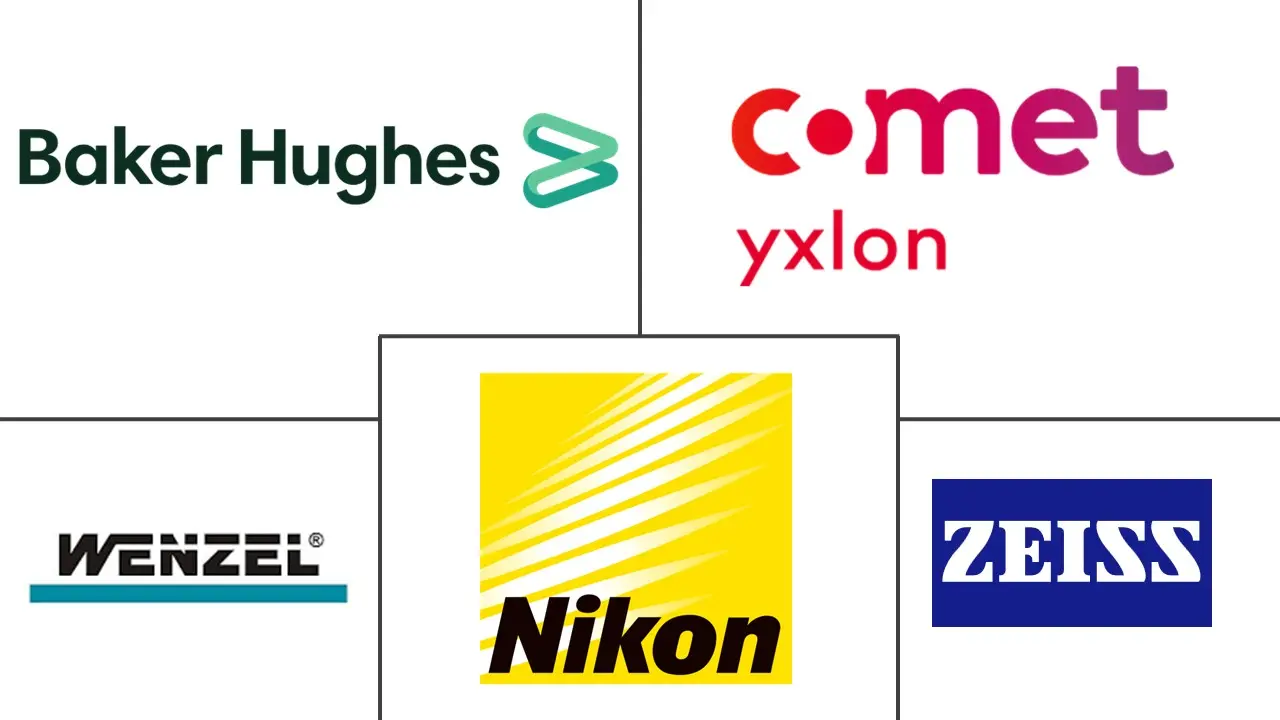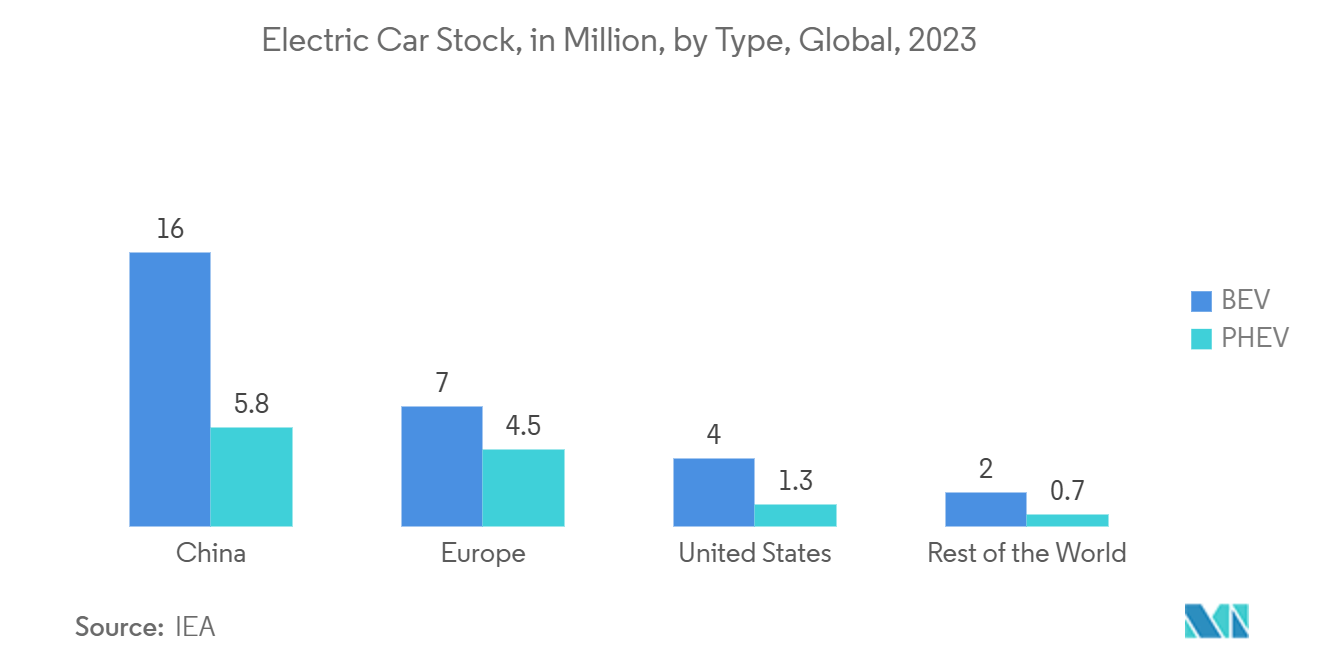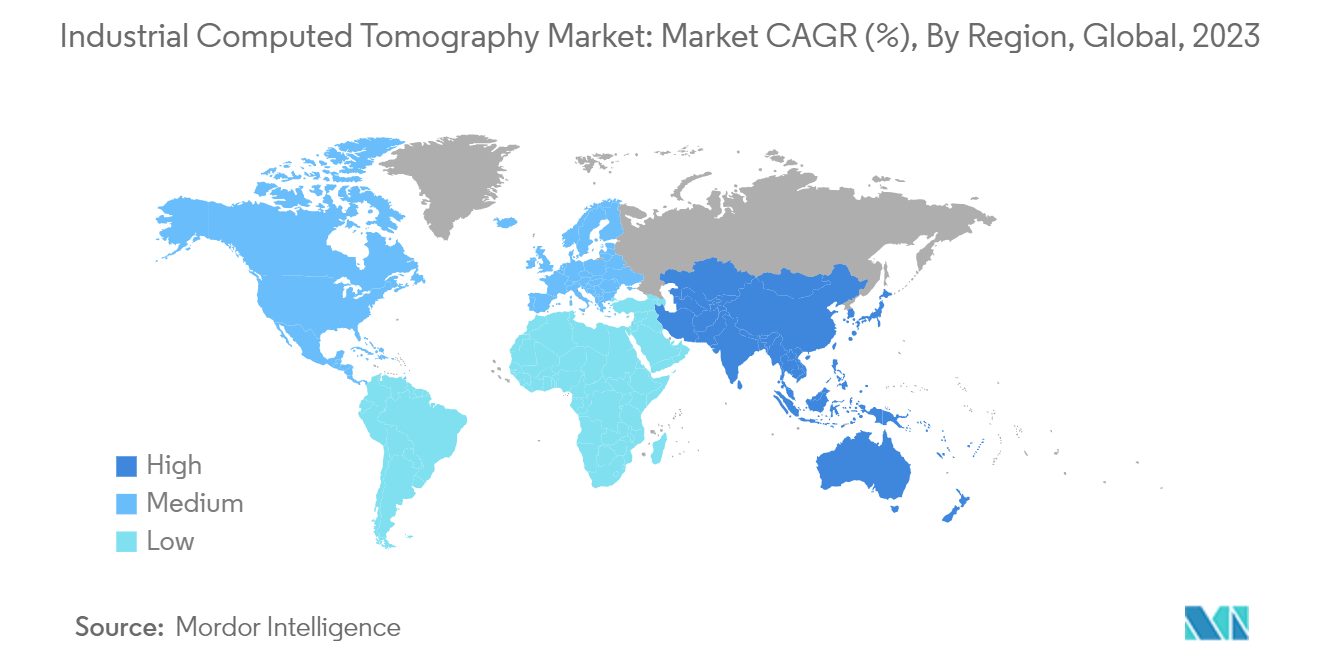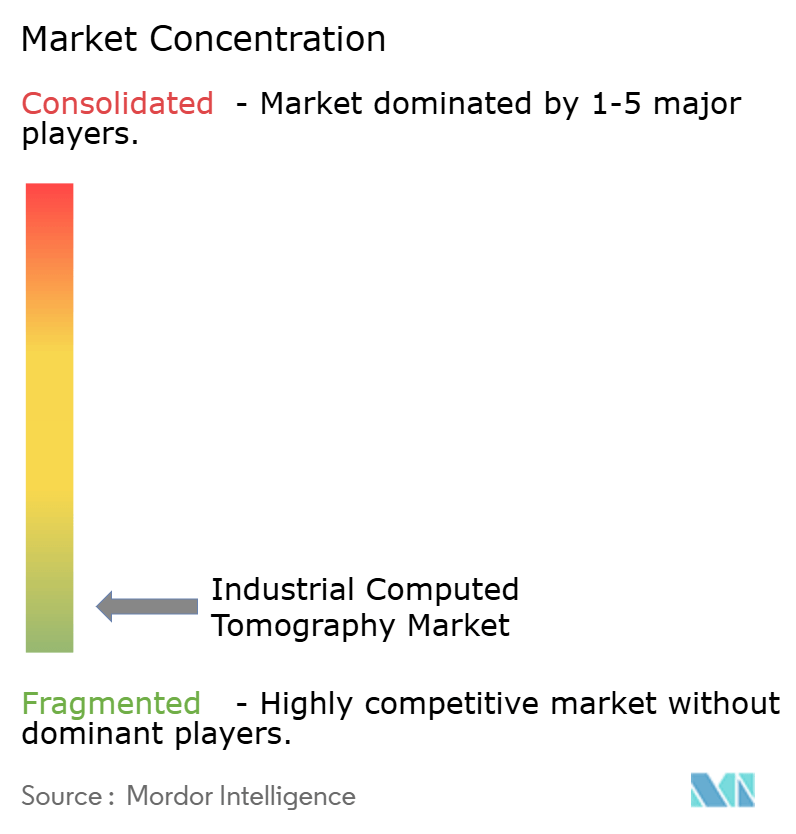Industrial Computed Tomography Market Analysis
The Industrial Computed Tomography Market size is estimated at USD 547.75 million in 2025, and is expected to reach USD 831.63 million by 2030, at a CAGR of 8.78% during the forecast period (2025-2030).
Computed tomography stands out as a pivotal non-destructive testing method, playing a crucial role in quality assurance and control. Industrial CT scanning offers a swift and effective non-destructive means to gather data, enabling the characterization of internal features and the comprehensive reconstruction of 3D models. Industrial computed tomography conducts a range of material analyses, spanning from traditional industrial evaluations like detecting process defects (voids, cracks, and porosities)—to metrology tasks, which include measuring both external and internal features of intricate geometries.
- As industries such as automotive, aerospace, electronics, and medical devices place greater emphasis on product quality and safety standards, they are increasingly investing in CT systems for precise quality assurance. For instance, in August 2024, NASA's internal watchdog took Boeing to task over its work on the upcoming version of the Space Launch System, highlighting major quality control oversights. In a report published on August 8, NASA's Office of Inspector General (OIG) pointed out critical shortcomings in Boeing's handling of the Block 1B variant of the SLS. This work, conducted at the Michoud Assembly Facility in New Orleans, was found to be compromised due to an inadequate quality management system and a workforce lacking proper training. The rising quality control issues in the aerospace industry drive demand for CT technology to detect defects, characterize materials, and maintain quality.
- Recent advancements in computed tomography technology have significantly improved resolution and image quality, which are crucial for industrial applications. High-resolution scanning allows for finer detail and precision, enabling the detection of smaller voids and defects within materials. This capability is particularly important in aerospace and automotive manufacturing industries, where ensuring components' structural integrity is critical. The development of high-resolution detectors and improved X-ray sources has further enhanced the capabilities and accuracy of industrial CT systems, making them more appealing for precision inspection tasks.
- The increasing demand for portable radiography equipment is a significant driver of growth in the industrial computed tomography market. Portable radiography equipment is becoming more popular due to its versatility and ability to perform inspection in various locations, which is particularly beneficial for industries with geographically dispersed assets such as oil and gas, automotive, and aerospace. This demand is further fueled by the need for efficient and flexible inspection solutions that can be conducted on-site, reducing the need for costly and time-consuming transportation of components to centralized facilities.
- The acquisition cost of industrial computed tomography systems is notably high, which poses a significant barrier to market growth. The initial investment required for purchasing these systems can be prohibitive, especially for small and medium-sized enterprises and startups that may not have the financial resources to afford such expensive equipment. This high cost of entry limits the number of potential buyers and restricts the expansion of the market.
- The ongoing Iran-Israel war, Russia-Ukraine war, and broader macroeconomic factors significantly impact the market. These conflicts have exacerbated global inflation, affecting raw materials and energy costs. As prices rise, manufacturers face increased operational costs, prompting them to seek more efficient processes. This drives the demand for industrial CT solutions, which can optimize production and reduce waste, ultimately helping companies manage their expenses more effectively. However, the conflict has led to significant disruptions in global supply chains, particularly in Europe and surrounding regions. These disruptions can hinder the availability of components necessary for the production of CT scanners. As companies look to mitigate risks associated with supply chain vulnerabilities, they may invest in advanced technologies to enhance their operational resilience and adaptability.
Industrial Computed Tomography Market Trends
Automotive Industry to be the Largest End User
- Industrial CT systems are extensively used for quality assurance in automotive manufacturing. They provide detailed 3D images of components, allowing manufacturers to detect internal defects such as cracks, voids, and inclusions that may not be visible through traditional inspection methods. This capability is crucial for ensuring the reliability and safety of automotive parts.
- CT in the automotive industry is also used for applications, including inspecting castings used in engines and gearbox casings. Internal structures may be measured, and defects, including fractures, porosities, and inclusions, may be identified. Very large CT systems based on X-ray imaging solutions are able to scan complete vehicles to identify assembly defects or reveal how internal structures have deformed after crash testing.
- Automotive companies can optimize production workflows by integrating industrial CT into manufacturing. Real-time feedback from CT inspections enables immediate adjustments, reducing waste and improving overall efficiency. This leads to cost savings and faster production times.
- According to Volume Graphics, one of the Austrian automotive suppliers reduced costs by around 50% after introducing industrial computed tomography (CT) as a measurement tool. Measurements using conventional optical and tactile inspection methods took 450 man-hours for the initial acceptance alone and destroyed the part in the process. Industrial CT provides insight into virtually all features of the part without destroying it and at lower costs. With the help of CT data and the macro and batch functionality, the same process only took 100 man-hours with only 80 more man-hours needed for final acceptance.
- The automotive industry's electric vehicle (EV) sector is currently the most dominant, resulting in an increased need for electrical products and components. The use of sensors is rapidly growing, especially in the automotive field. This high demand is projected to continue at heightened levels in the future, with support from other industries. Government initiatives, including subsidies and efforts to reach carbon emission targets, are expected to drive investments in the region's EV sector, thereby enhancing the market's growth opportunities.
- At present, the testing for EVs has expanded to encompass more than just homologation testing for the vehicles and their components. It now involves evaluating charging interfaces and the associated systems that enable communication between the cars, charging stations, and back-office systems.
- Based on the Global EV Outlook 2024 by IEA, electric car sales in the United States are forecasted to increase by 20% in 2024 compared to 2023, resulting in nearly half a million more sales than in 2023. Despite recent trends and the upcoming tightening of CO2 targets in 2025, the growth in electric car sales in Europe is anticipated to be the slowest among the three most significant markets. Sales are expected to reach approximately 3.5 million units in 2024, showing a modest growth of less than 10% from the previous year. These developments drive the demand for the industrial CT market throughout the forecast period.
Asia Pacific Expected to Witness Significant Growth
- China is expected to remain the primary market for industrial computed tomography (CT) systems in the Asia Pacific region. This trend is influenced by several factors, including the country's extensive industrial and manufacturing sectors. China's manufacturing ecosystem demonstrates significant agglomeration economies. The country has developed a comprehensive industrial landscape, recognized by the United Nations' industrial classification. Notably, China's industrial depth is highlighted by its 12,000 small firms, of which over 90% supply major global enterprises. These firms are elite small and medium-sized enterprises excelling in niche markets with advanced technologies and substantial growth potential.
- In 2023, China's industrial production approached CNY 40 trillion (approximately USD 5.57 trillion), accounting for 31.7% of its Gross Domestic Product (GDP). According to the Ministry of Industry and Information Technology (MIIT), China's manufacturing scale has maintained the global top position for 14 consecutive years. The 2023/24 Business Confidence Survey by the German Chambers of Commerce Abroad Greater China indicated that over half of the participating companies plan to increase their investments in China over the next two years, citing the country's robust supply chain and increased innovation as primary motivators.
- India is one of the fastest-growing economies in the Asia Pacific region. Its growth is driven by industrialization, increasing adoption of digital and advanced industrial technologies, and a large consumer base. The expanding industrial sector in the country is expected to create opportunities in the market. The government's supportive outlook further bolsters India's industrial growth. India initiated a vision to become a manufacturing and export hub, aiming to reduce import dependence and establish itself as a global manufacturing leader. Initiatives like 'Make in India' and 'Atmanirbhar Bharat' were launched to strengthen the manufacturing sector, targeting to increase its GDP contribution from 16% to 25% by 2025.
- India has become a prominent automobile manufacturing hub in the Asia Pacific region. According to OICA, India's motor vehicle production volume reached approximately 5.9 million units in 2023, up from 5.5 million in 2022.
- Japan is one of the most industrialized economies in the Asia Pacific region. The country has a significant presence in industries such as automotive manufacturing, aerospace, electronics, and medical device manufacturing. Japanese industries are globally recognized for their innovation and quality-focused approach. According to the Global Innovation Index (GII), which ranks world economies based on their innovation capabilities, Japan ranked 12th among the 51 high-income group economies and 4th among the 17 economies in Southeast Asia, Oceania, and East Asia in 2024. As a result, the research and innovation sector in the country is anticipated to remain a key demand driver for industrial computed tomography systems.
Industrial Computed Tomography Industry Overview
The intensity of competitive rivalry in the market is defined as the competition prevailing in the industry among the established players. The major factors governing this force are sustainable competitive advantage through innovation, levels of market penetration, levels of advertising expense, power of competitive strategy, and firm concentration ratio.
The industrial CT market has some of the major manufacturers such as Baker Hughes, Carl Zeiss AG, YXLON International, WENZEL Group, Nikon Metrology, Diondo GmbH, Werth Group, North Star Imaging, RX Solution, and others which contribute to the intensity of competitive rivalry. Such vendors are established and have deep penetration in the market for industrial CT systems.
The barriers to exit are high as the capital requirements for developing industrial CT scanners are high, leading to the overall cost of the products. Thus, the barriers to exit positively affect the intensity of competitive rivalry.
Moreover, the involvement of large-scale investment increases the barriers to exit for the existing players. The market for industrial CT scanners is growing steadily, driven by the demand for advanced inspection and quality control solutions, which sustains the competition without leading to extreme price wars.
Therefore, the competitive rivalry in the market is high, and it is expected to increase over the forecast period.
Industrial Computed Tomography Market Leaders
-
Baker Hughes Company (waygate Technologies)
-
Carl Zeiss AG
-
Yxlon International Gmbh (comet Group)
-
Wenzel Group
-
Nikon Metrology NV (Nikon Corporation)
- *Disclaimer: Major Players sorted in no particular order
Industrial Computed Tomography Market News
- July 2024: Nikon Metrology and Hyundai Motor North America announced that Hyundai has acquired and implemented Nikon’s X-ray computed tomography (CT) system. This marks a substantial investment in the success of Hyundai’s recently inaugurated USD 51.4 million Safety Test and Investigation Laboratory (STIL) located in Superior Township, MI.
- February 2024: RX Solutions, an X-ray CT scanning company, has introduced the EasyTom-L, a significant upgrade in its EasyTom series of industrial computed tomography (CT) systems. The EasyTom-L incorporates features that were once exclusive to larger systems. With its expanded interior cabinet volume and refined stage setup, the machine can handle parts and devices of varying sizes. Its dual-tube configuration also supports high-energy micro-focus (up to 300 kV) and nano-focus applications.
Industrial Computed Tomography Industry Segmentation
Industrial CT scanning employs high-powered X-rays to delve into the internal geometries of objects. This makes it an ideal inspection tool for high-value parts, especially where destructive testing would be financially unfeasible. The advantages of industrial CT scanners are manifold: they nondestructively reveal an object's internal structure, validate precise internal dimensions, facilitate comparisons to reference models, eliminate shaded zones, accommodate all shapes and sizes, require no post-processing, and deliver exceptionally high-resolution images. The market is defined by the revenue generated from the sale of different types of industrial computed tomography solutions offered by different market players across various end-user industries.
Industrial computed tomography market is segmented by voltage range (low-medium voltage, high voltage), by application (flaw detection/inspection, failure analysis, assembly analysis, other applications), by end-user industry (aerospace and defense, automotive, electronics, medical devices, academics/research institutions, other end-user industries), by geography (North America [by voltage range, by end user industry, by country [United States, Canada]], Europe [by voltage range, by end user industry, by country [United Kingdom, Germany, France, Italy, rest of Europe]], Asia [[by voltage range, by end user industry, by country [China, India, Japan, Rest of Asia Pacific]], Latin America, Middle East and Africa). The report offers market forecasts and size in terms of value in USD for all the above segments.
| By Voltage Range | Low-Medium Voltage | ||
| High Voltage | |||
| By Application | Flaw Detection/Inspection | ||
| Failure Analysis | |||
| Assembly Analysis | |||
| Other Applications | |||
| By End-user Industry | Aerospace and Defense | ||
| Automotive | |||
| Electronics | |||
| Medical Devices | |||
| Academics/Research Institutions | |||
| Other End-user Industries | |||
| By Geography*** | North America | United States | |
| Canada | |||
| Europe | United Kingdom | ||
| Germany | |||
| France | |||
| Italy | |||
| Asia | China | ||
| India | |||
| Japan | |||
| Australia and New Zealand | |||
| Latin America | |||
| Middle East and Africa | |||
Industrial Computed Tomography Market Research Faqs
How big is the Industrial Computed Tomography Market?
The Industrial Computed Tomography Market size is expected to reach USD 547.75 million in 2025 and grow at a CAGR of 8.78% to reach USD 831.63 million by 2030.
What is the current Industrial Computed Tomography Market size?
In 2025, the Industrial Computed Tomography Market size is expected to reach USD 547.75 million.
Who are the key players in Industrial Computed Tomography Market?
Baker Hughes Company (waygate Technologies), Carl Zeiss AG, Yxlon International Gmbh (comet Group), Wenzel Group and Nikon Metrology NV (Nikon Corporation) are the major companies operating in the Industrial Computed Tomography Market.
Which is the fastest growing region in Industrial Computed Tomography Market?
North America is estimated to grow at the highest CAGR over the forecast period (2025-2030).
Which region has the biggest share in Industrial Computed Tomography Market?
In 2025, the North America accounts for the largest market share in Industrial Computed Tomography Market.
What years does this Industrial Computed Tomography Market cover, and what was the market size in 2024?
In 2024, the Industrial Computed Tomography Market size was estimated at USD 499.66 million. The report covers the Industrial Computed Tomography Market historical market size for years: 2019, 2020, 2021, 2022, 2023 and 2024. The report also forecasts the Industrial Computed Tomography Market size for years: 2025, 2026, 2027, 2028, 2029 and 2030.
Our Best Selling Reports
Industrial Computed Tomography Industry Report
Statistics for the 2025 Industrial Computed Tomography market share, size and revenue growth rate, created by Mordor Intelligence™ Industry Reports. Industrial Computed Tomography analysis includes a market forecast outlook for 2025 to 2030 and historical overview. Get a sample of this industry analysis as a free report PDF download.







